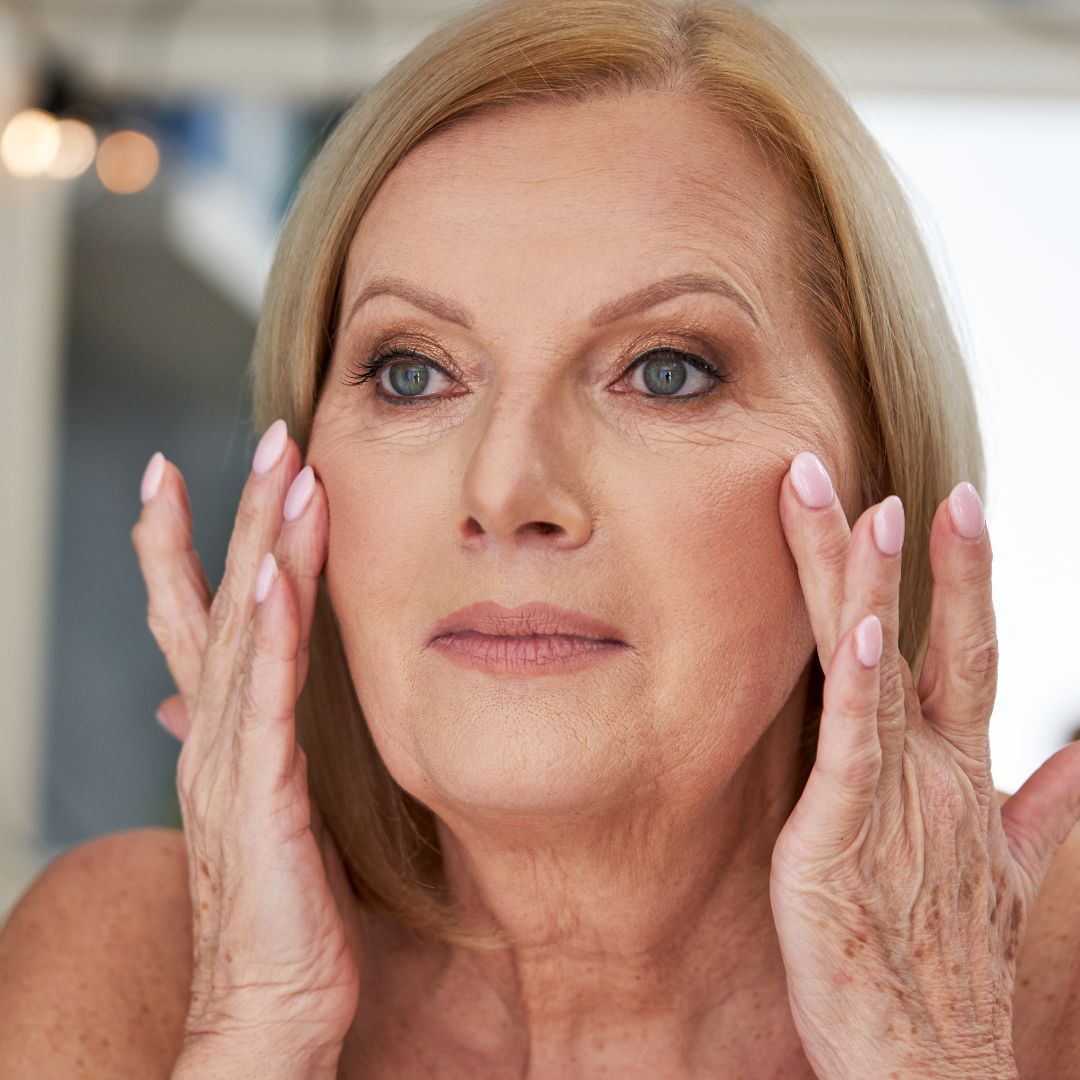Wrinkles are an inevitable part of aging, but did you know that your daily habits can speed up their appearance? By understanding the stages of wrinkle formation, you can take smart steps to keep your skin looking youthful and radiant. In this ultimate guide, we'll dive into how wrinkles develop, the lifestyle choices that impact their formation, and the best skincare strategies to prevent and treat wrinkles and fine lines at any age. We'll get you up and running on how to maintain smooth, youthful skin with our expert tips and advice!
Phase 1: Loss of Skin Elasticity

What It Is: Skin elasticity refers to the skin's ability to stretch and then return to its original shape. With age, collagen and elastin fibers degrade, reducing this ability. You can take a skin elasticity test easily - gently pinch the skin on your cheek with your thumb and forefinger and hold it for five seconds. Let go and time how long it takes the skin to flatten back out. The shorter the time, the younger the "functional age" of your skin is, and hence, the more "elastic" your skin is.
Signs: Early signs of losing skin elasticity include sagging skin and a less firm texture, often first noticeable around the eyes and mouth.
Lifestyle Factors:
- Sleep Quality: Poor sleep increases cortisol, the stress hormone, which breaks down collagen. Clinical and Experimental Dermatology found that good sleep quality maintains healthier skin.
- Genetics: Genetic predisposition affects how quickly your skin loses elasticity. Dermato-Endocrinology states that genetics account for about 60% of skin aging.
- Diet: Diets low in antioxidants and high in sugar can accelerate collagen breakdown. Journal of the American College of Nutrition notes high sugar intake damages collagen and elastin.
Preventative Skincare:
- Early to Mid-20s: Not all hope is lost, with the right lifestyle changes, you can get ahead of the first phase of skin wrinkles. Focus on gentle cleansers and moisturisers with antioxidants to support skin health and protect against environmental damage.
Phase 2: Formation of Fine Lines

What It Is: Fine lines are shallow wrinkles that often form in areas with repetitive movements, like around the eyes (crow's feet) and mouth.
Signs: Initial fine lines appear as slight creases on the skin’s surface, becoming more noticeable when the skin is dry or dehydrated.
Lifestyle Factors:
- Hydration: Drinking water maintains skin moisture. Clinical, Cosmetic and Investigational Dermatology highlights that adequate water intake improves skin appearance. As a general rule of thumb, we'd suggest drinking at least 2 litres of water per day to keep your skin plump and healthy.
- Diet: Omega-3 fatty acids help maintain skin’s moisture barrier. Foods like fish and flaxseeds are extremely beneficial for skin health.
Preventative and Treatment Skincare:
- Late 20s to Early 30s: Fine lines will often start to appear in your late twenties to early thirties. Look to incorporate products with antioxidants and Vitamin C. This is also a good time to start using retinoids or natural alternatives like bakuchiol serums.
Phase 3: Development of Deeper Wrinkles

What It Is: Deeper wrinkles are more pronounced lines that result from further loss of skin structure and volume.
Signs: These wrinkles are usually visible even when the face is at rest and often appear on the forehead, around the mouth, and neck.
Lifestyle Factors:
- Sun Exposure: UV rays break down collagen. Regular sunscreen use is essential to protect against UV damage.
- Smoking: Reduces blood flow to the skin, depriving it of essential nutrients. Journal of Dermatological Science confirms smoking accelerates wrinkle formation.
Treatment Skincare:
- Mid-30s and Beyond: Use products with retinoids or bakuchiol, Vitamin C serums, and peptides to stimulate collagen production and reduce wrinkle depth. Ensure consistent use of sunscreen and moisturisers. At this stage, it's also a good idea to incorporate heavier, rich creams and lipid-rich formulations as part of your nightly routine that can help with repairing your moisture barrier.
Common Problem Areas
Wrinkles and fine lines can appear on various parts of the face, with some areas more prone to developing lines and creases:
- Forehead: Horizontal lines and deep-set static wrinkles are common due to repeated expressions and sun exposure.
- Eyes: Crow's feet and under-eye wrinkles result from smiling, squinting, and thinning skin.
- Mouth: Smile lines (nasolabial folds) and vertical lines above the lips form from repeated mouth movements.
- Neck: Horizontal lines and sagging skin develop from aging and sun damage. The neck is also an often forgotten part of many skincare routines, leading it to age faster than the face sometimes.
Conclusion
Wrinkle formation is a multifaceted process influenced by genetic, environmental, and lifestyle factors. By understanding the phases of wrinkle development and incorporating natural topical treatments along with healthy lifestyle choices, you can effectively manage and reduce the appearance of wrinkles. Emphasising quality sleep, a balanced diet, proper hydration, and protective skincare can significantly contribute to maintaining youthful, vibrant skin. Remember, ageing is a beautiful thing - with or without wrinkles!




